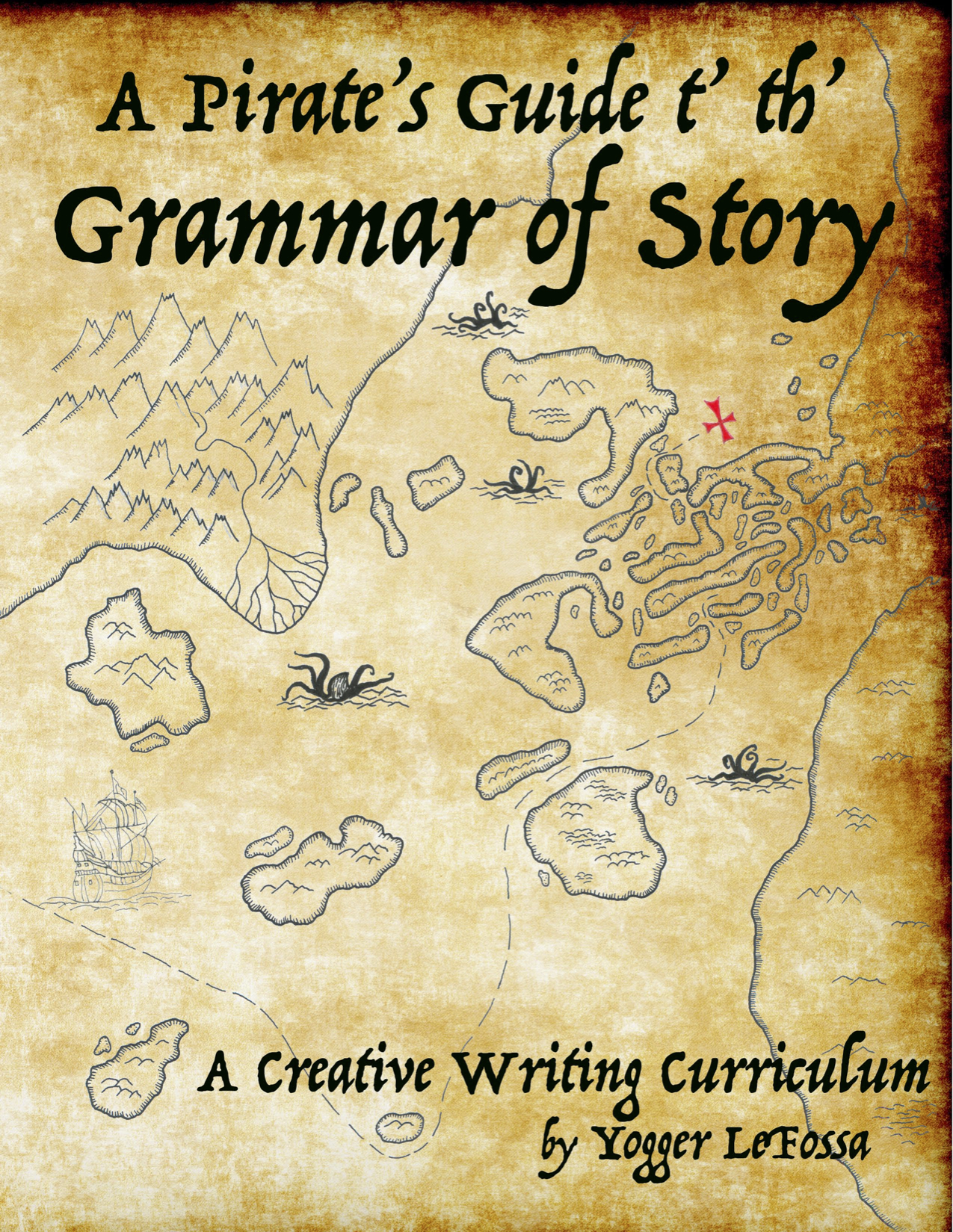Exercise 19 :: Villain :: Who's the bad guy?
Devious music, a long handled mustache, a black cape. All these are classic symbols of a story villain. But in A Pirate’s Guide, princesses, heroes, and villains aren’t simply the pretty girl, the young strong knight, and the evil step-mother. They have specific functions in the story - which means that the handsome knight who is coming to rescue the princess, only to sell her to the evil step-mother looks like a hero (until the end), but is actually a villain. Going through the exercises and teaching will quickly help your student see how these different roles work.
The villain is the character (or thing) that is on the side of the Act of Villainy. Remember, the AoV is what starts the story, and solving the AoV ends the story. The villain may (or may not) be the cause of the AoV. If the AoV is the stealing of the princess, the villain may be the one who stole her, or he may simply be another character that is on the side of her being stolen.
The villain sees the AoV as a good thing. This is often a matter of perspective. And here we run into how these concepts can apply in real life. The student is asked to identify the villain in the exercise. Here is one example: “Because we didn’t have the proper permits to camp in the national park, the police officer forced my family to leave.” Who is the villain? Is it the police officer, who forced my family to leave? Is it the family, who, by not having a permit, forced the police officer to force them to leave? Is it the parent who neglected to get the permit? Is it the park service for creating a park that required permits? Your perspective will determine who you perceive the villain to be.
Remember, the key is that the villain is the one who supports the AoV. They either made it happen, or want it to continue. They are NOT trying to solve the problem, or resolve the story. (True in story, true in life).
In Real Life :: When you require your children to finish their homework before going out to play, who is the villain? The problem is that the homework isn’t done, and it must be done before play. (AoV = unfinished homework). To you, the student may be the villain, since they aren’t finishing their homework as required. To the student, they may see you as the villain, the one who has a requirement they don’t want to meet. Or they may see the homework as the villain. Or the teacher that assigned it. Understanding their perspective, and helping them to understand yours, will help determine what actions you both take, and this in turn will determine how this story ends. I find this somewhat of a convicting function, because you don’t have to be a “bad guy” to be a villain. You can, in one sense, simply not choose to do something about an AoV that you see - this plays into the “dark shadows” portion of light and dark. Or you might be perpetuating a problem because you aren’t aware it is a problem for someone, and inadvertently you become a villain in their story. Being aware of these functions, and what your response is, can make you more aware of who you are in the story of life around you.
Finding it in the Story :: pg 225 :: the villain is the kraken. You might ask your student to think back to some other parts of the story and makes some guesses as to who else has acted, even in just one short scene, as a villain. As they come to understand the other characters more, they will be able to see if they were right or not.
